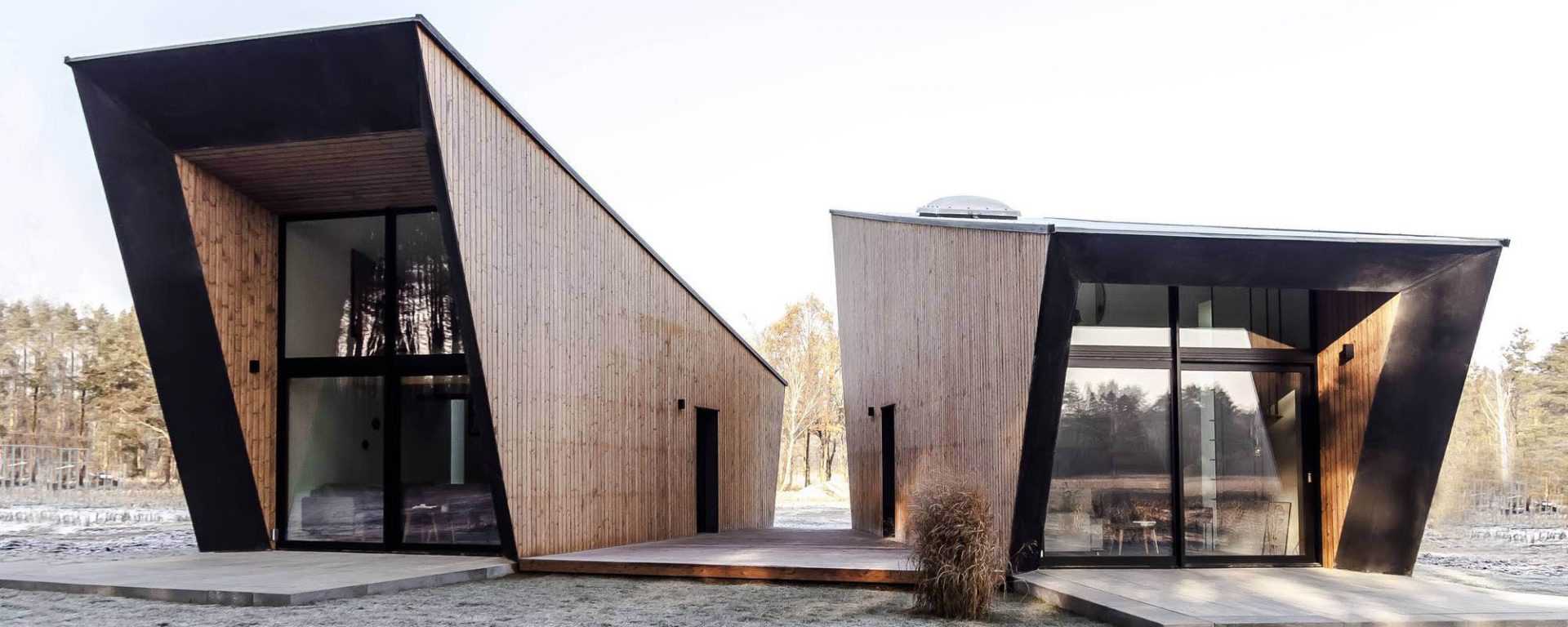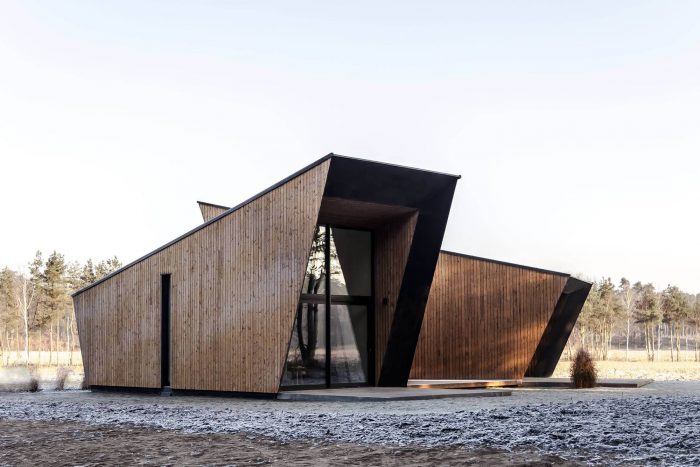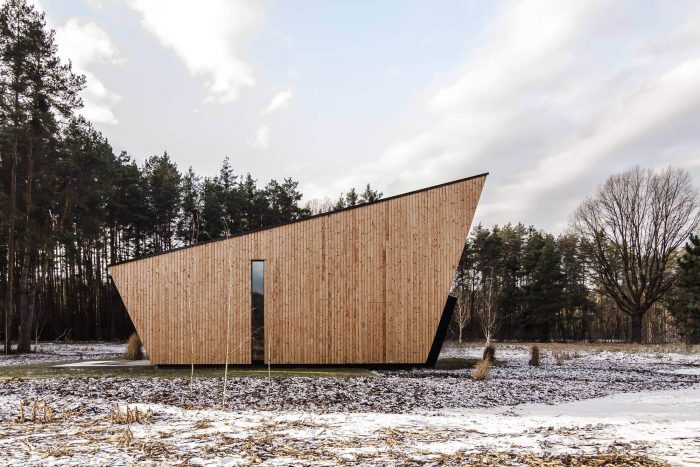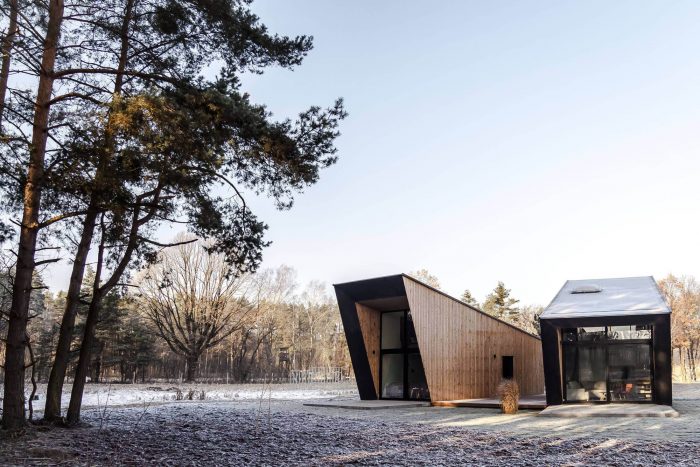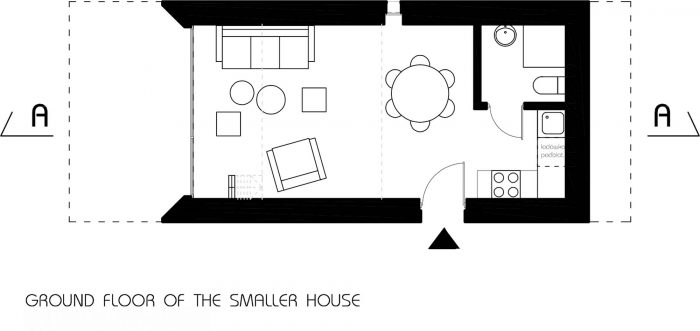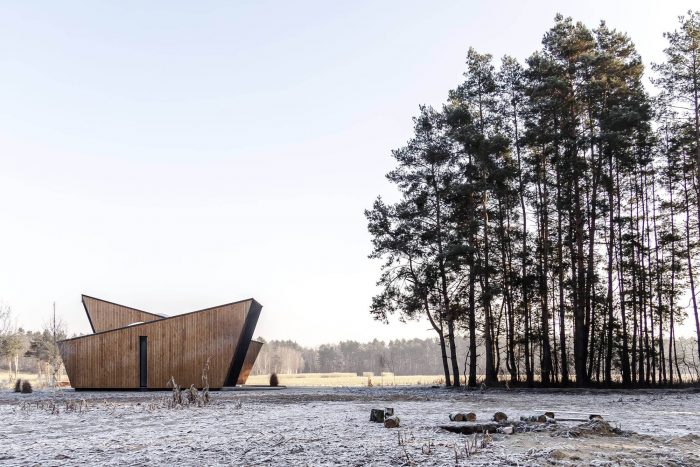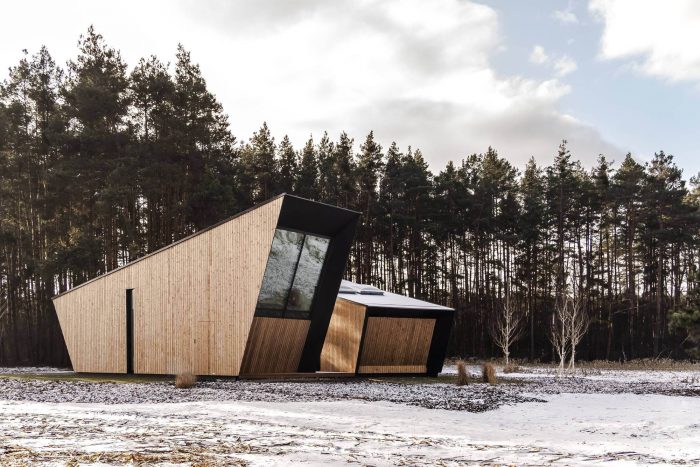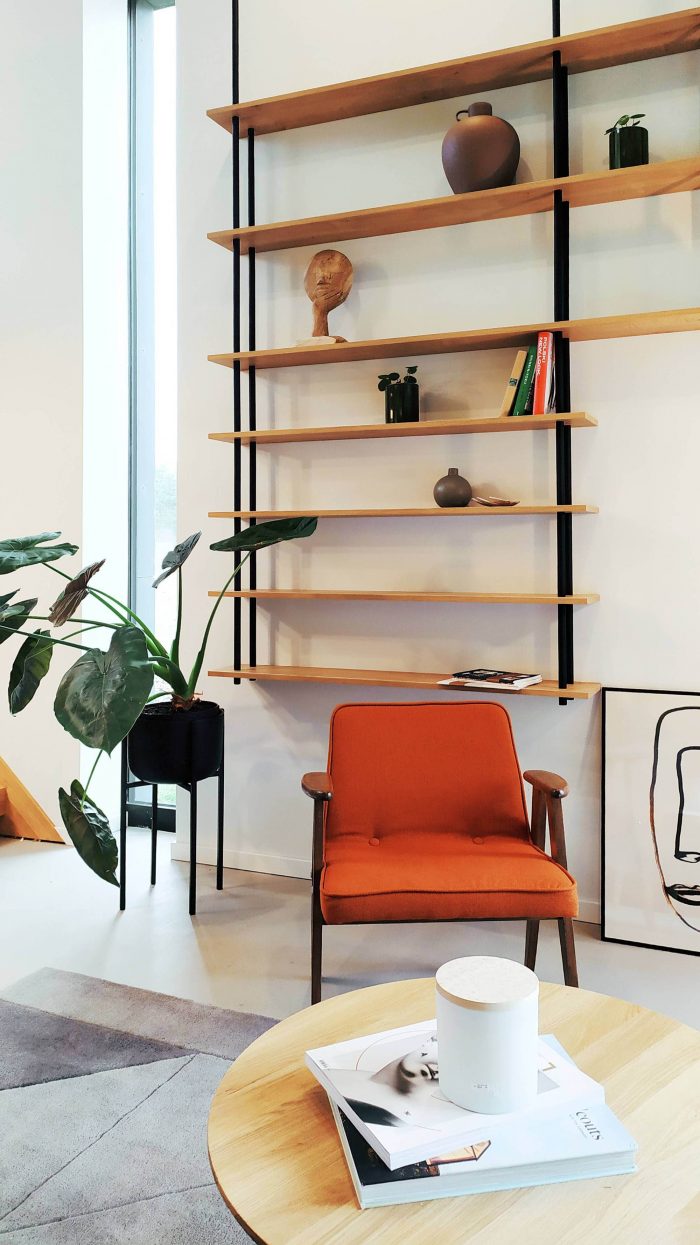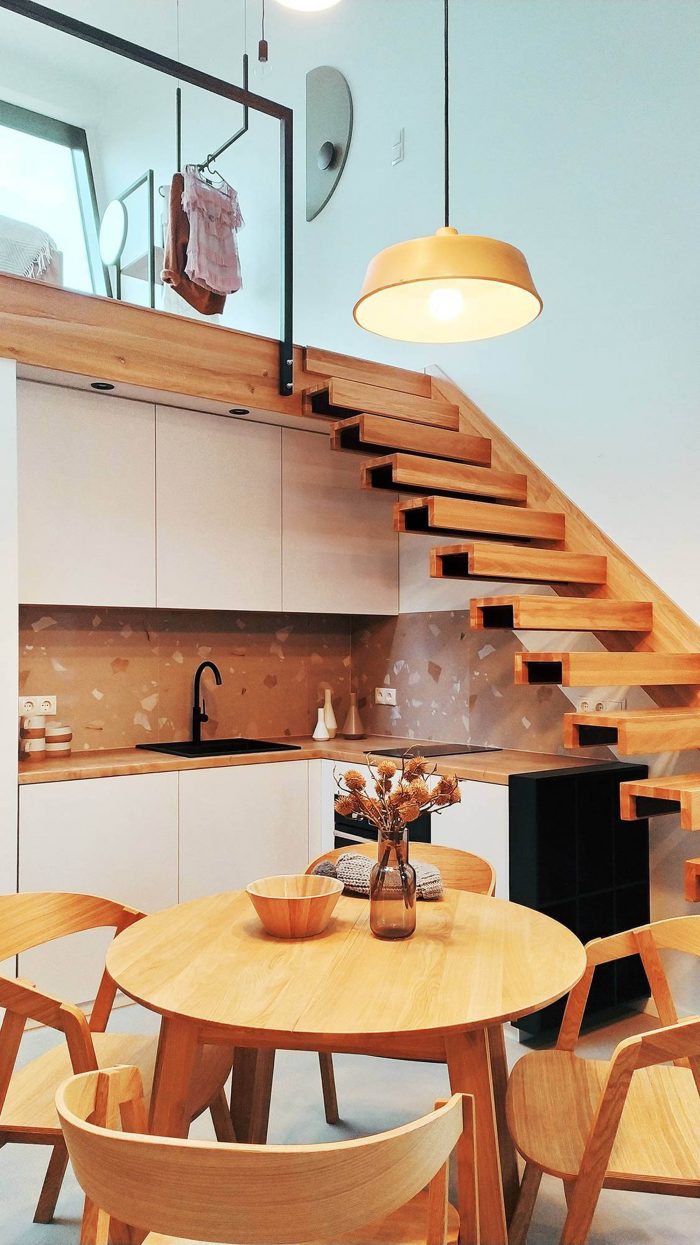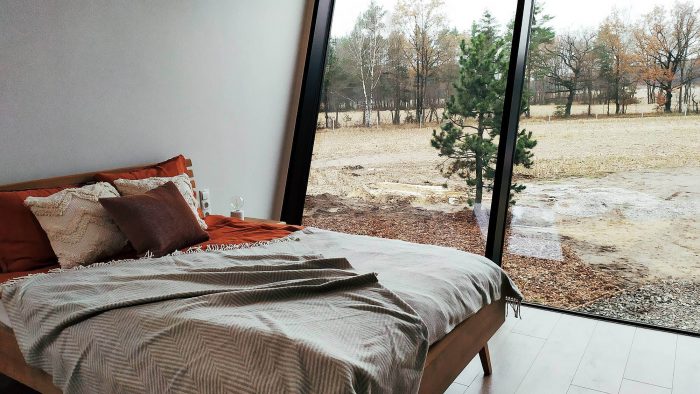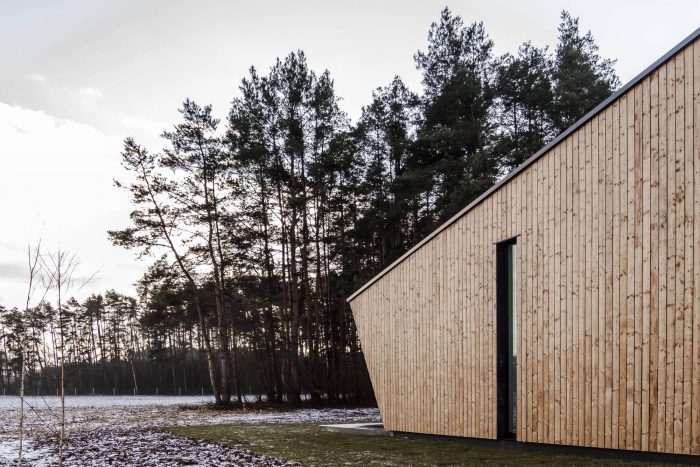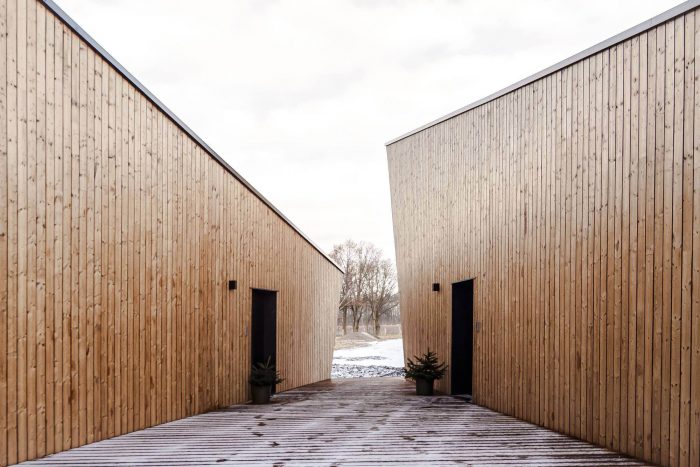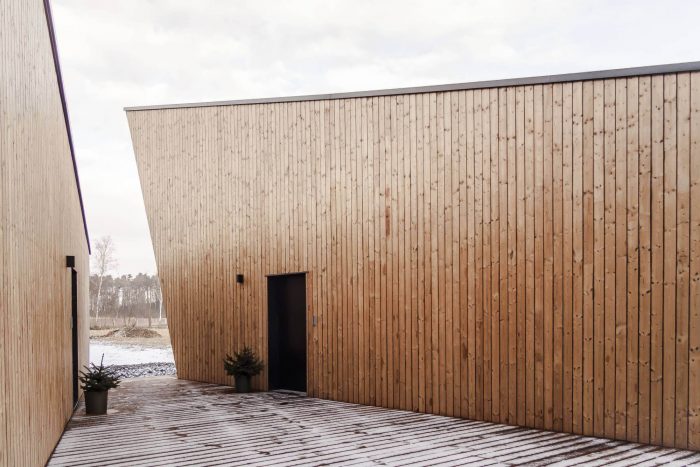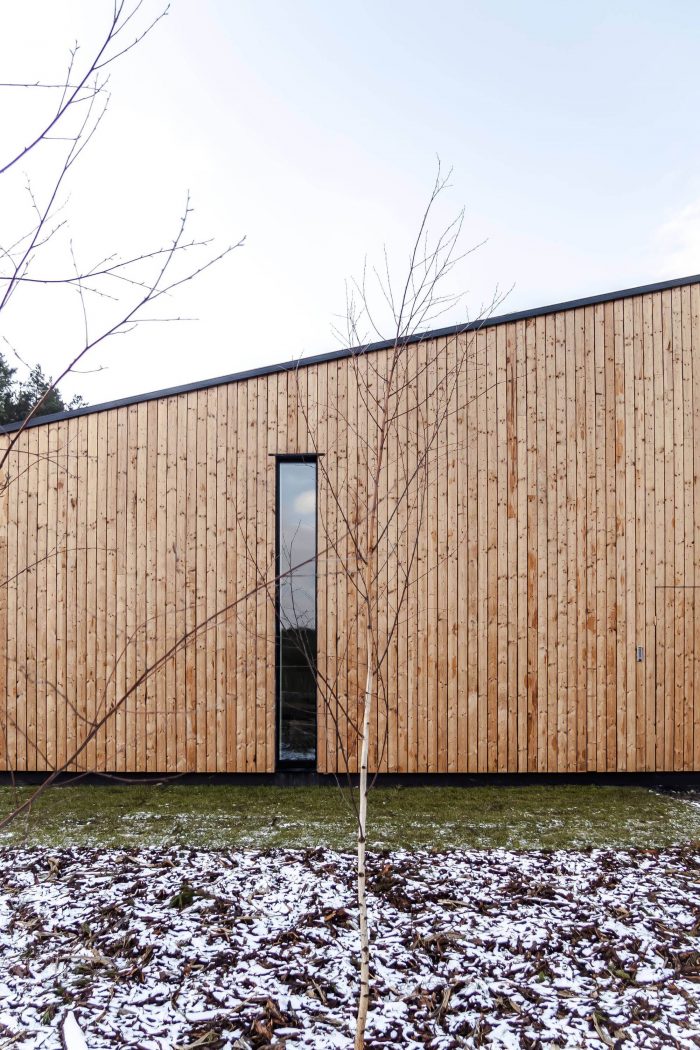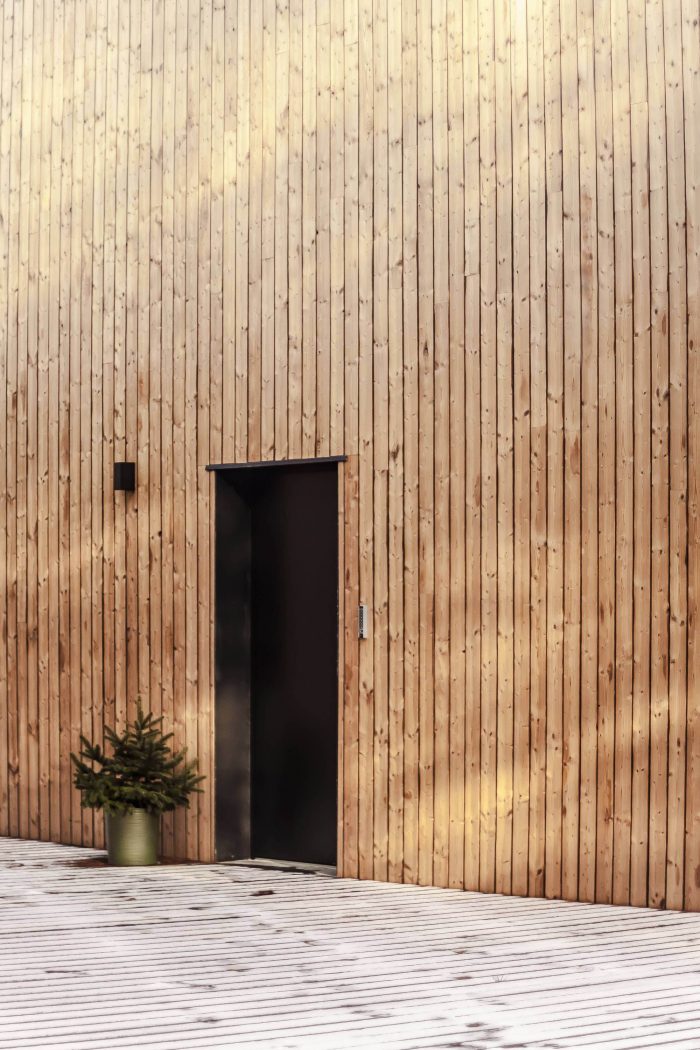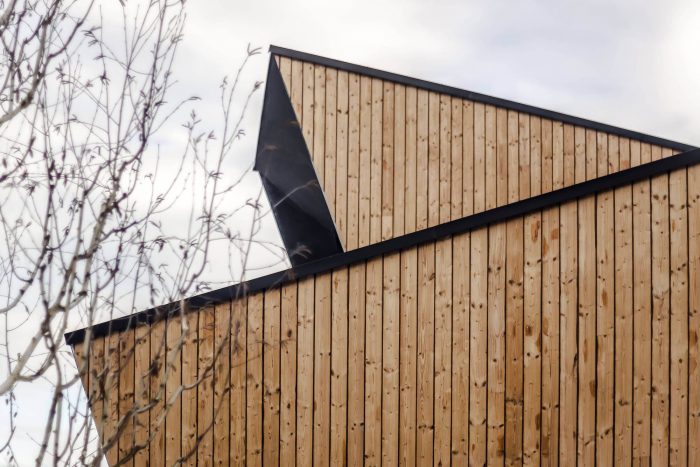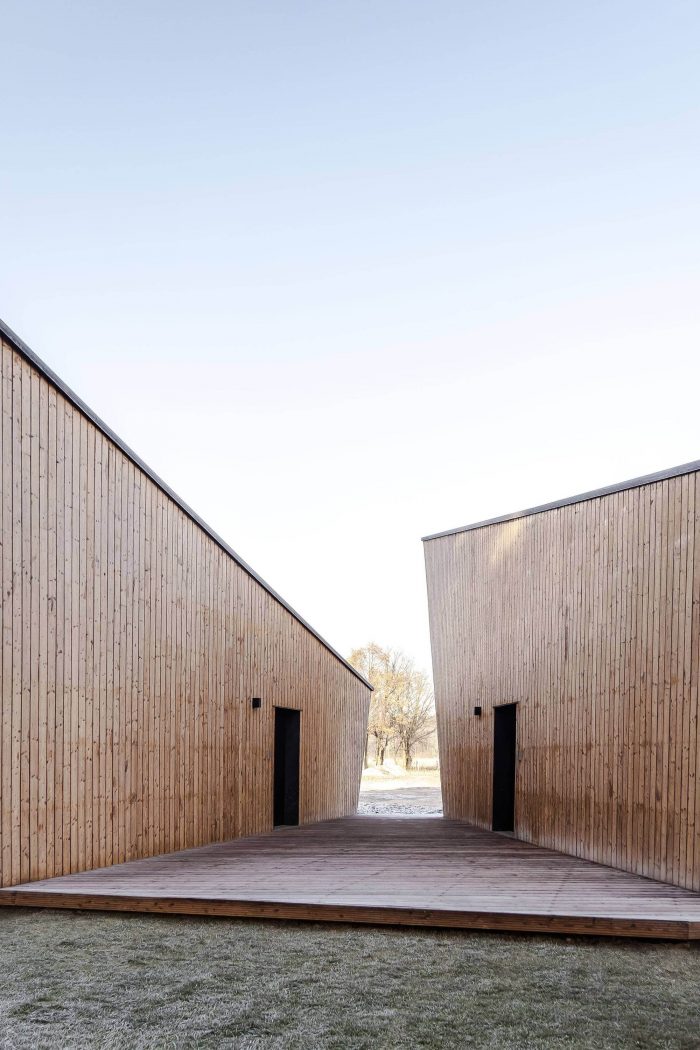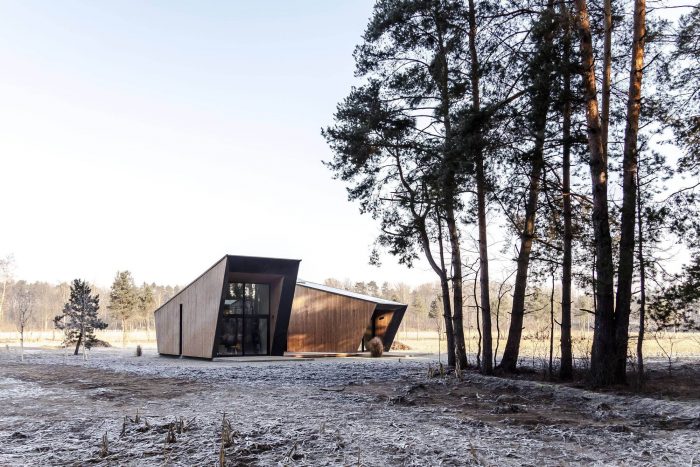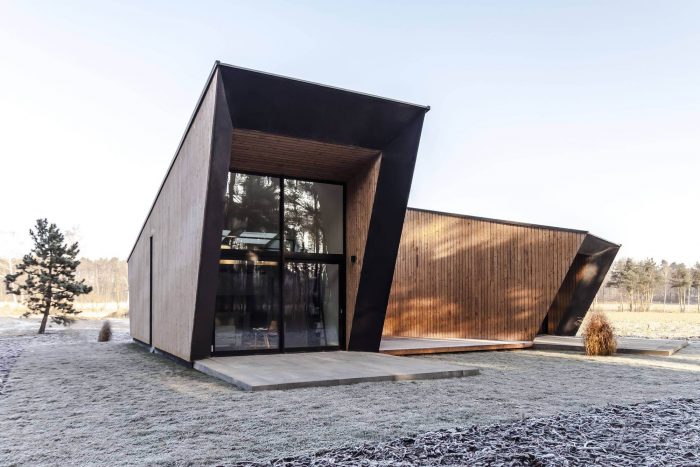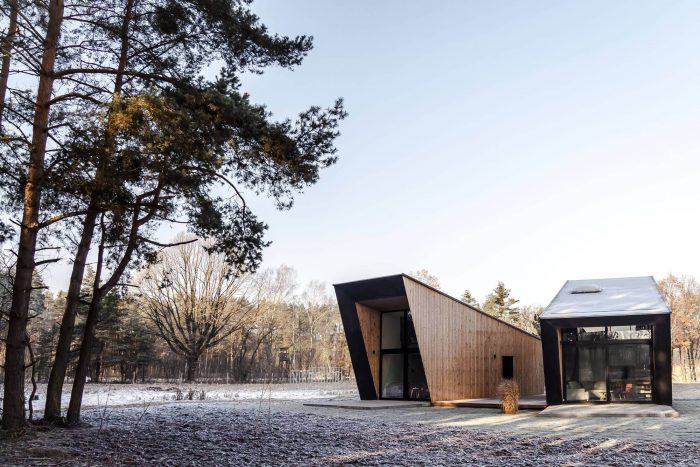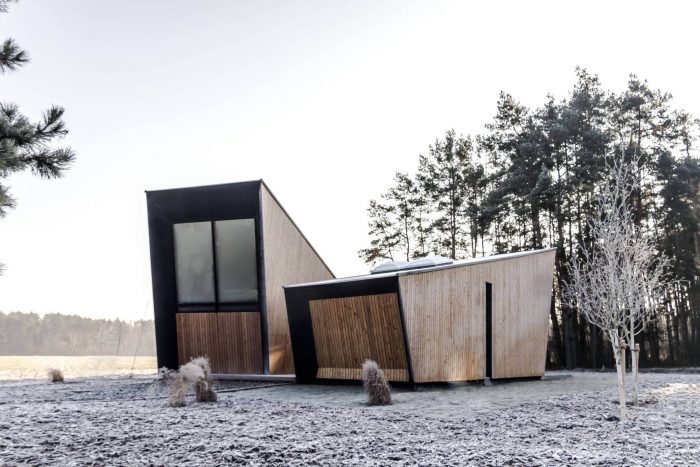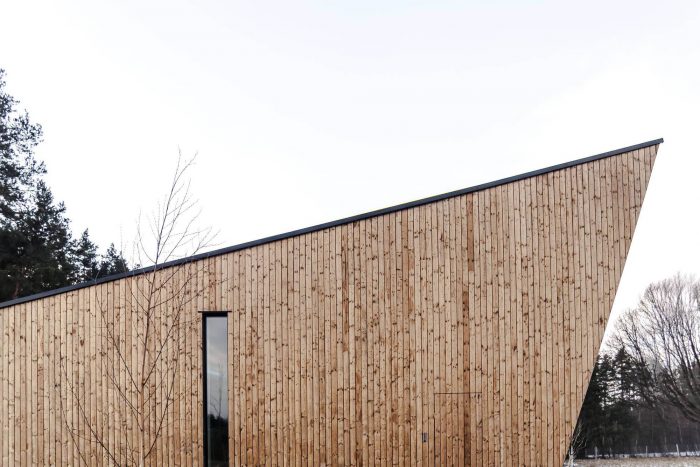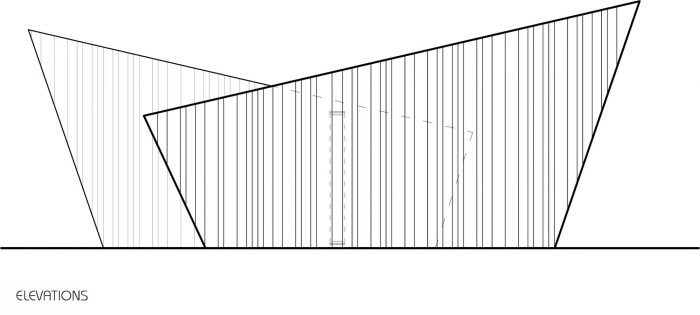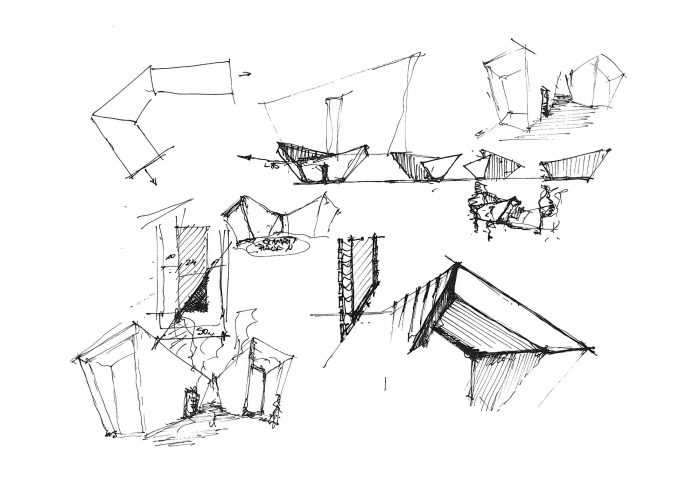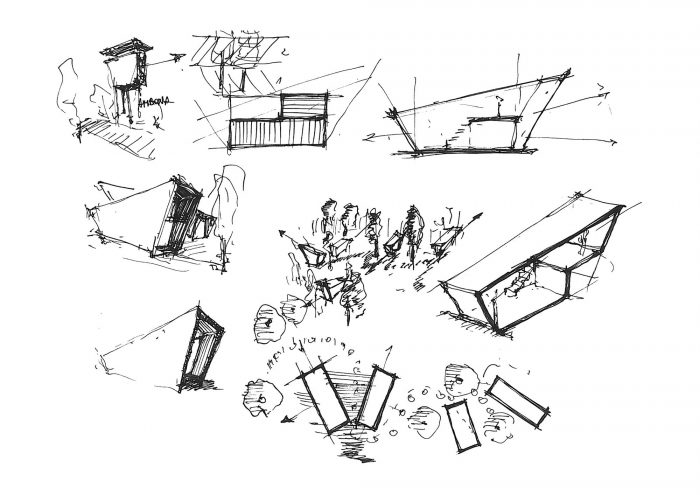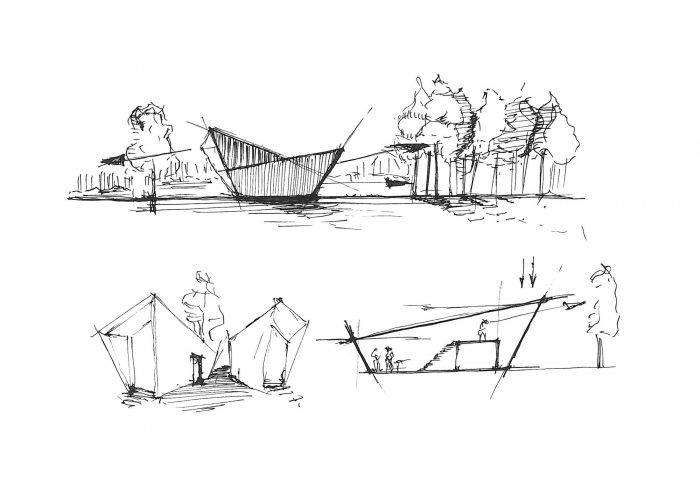疫情重新定义了我们现有的生活模式和风格。它打破了我们习惯的秩序。把自己封闭在我们非常舒适的公寓的四面墙内,我们现在梦想着以一种安全与和平的感觉到外面去。我们梦想着一个 “城外 “的地方,梦想着我们的庇护所,在那里没有人会告诉我们该做什么,该怎么做。以上的答案就是Cichosza Cottages的设计。此外,投资者还承担了这个地方的有机发展。
The epidemic situation redefined our existing model and style of living. It broke the order we are used to. Closed within the four walls of our very comfortable apartments, we now dream of going outside in a sense of security and peace. We dream about a place somewhere “outside the city”, about our asylum, where no one will tell us what and how to do. The answer to the above is the design of Cichosza Cottages. Additionally, the Investor assumed the organic development of this place.
在未来,它可能会成长为他人的避风港,一个宁静的地方,一个远离城市喧嚣的日常生活的跳板。这个项目是由一张草图连接三条线而产生的。只是,还有这么多。三条线标记了建筑的主体,将其功能塑造为形式。
In the future, it may grow and become a haven for others, a place of tranquility, a springboard from everyday life away from the hustle and bustle of the city. The project was created from a sketch connecting three lines. Just that and so much. Three lines marked the body of the building, shaping its functions into form.
建成了两座建筑。一方面,它的外部造型相似。另一方面,在功能上完全不同。根据一个家庭两代人的需求进行设计和调整。然而,通过一个共同的露台,整合了代际之间的联系。”建筑不需要任何装饰品或不必要的附加物。
Two buildings were built. On the one hand, it has a similar external shape. On the other hand, completely different in terms of functionality. Designed and adapted to the needs of two generations of one family. Integrated, however, through a common terrace that is an intergenerational link. “Architecture doesn’t need any ornaments or unnecessary additions.
建筑不一定要时尚。建筑既要对使用者负责,也要对外部接受者负责。在设计上,建筑应该与它所创造的景观相辅相成。建筑共同创造景观,融合了自然的元素和人类想象的产物。当我们在一个自然形态和非城市化的地方进行设计时,这一点尤为重要。在那里,自然起着决定性的作用,是它的主要资产。
Architecture doesn’t have to be fashionable. Architecture should be responsible both for its users and external recipients. By design, architecture should complement the landscape in which it is created. Architecture co-creates the landscape, integrates elements of nature and the product of human imagination. It is especially important when we design in a naturally shaped and non-urbanized place. Where nature plays a decisive role and is its main asset.
这就是这里的情况–在森林中间的一片绿地上的一栋别墅。 外立面采用北欧落叶松,其边缘经过鞣制,进一步强调了外立面的线性排列。通过使用两种不同的材料:木材和纤维水泥板,进一步强调了动态的形状和线条的纤细。” “建筑的假设显示了周围空间的碎片,邀请他们进入。每一扇窗户都是不同的形象,在不同的平面上有不同的视角。这些不同寻常的别墅内部所使用的材料和颜色也是受到周围田野和森林景观的启发。
This was the case here – a cottage in a glade in the middle of the forest. The facade is finished with Scandinavian larch, the edges of which have been tanned to further emphasize the linear arrangement of the facade. The dynamic shapes and slenderness of the lines are additionally emphasized by the use of two different materials: wood and fiber cement boards.” “The building’s assumption shows fragments of the surrounding space, inviting them to enter. Each window is a different image with a different perspective on different planes. The materials and colors used in the interiors of these unusual cottages were also inspired by the surrounding landscape of fields and forests.
建筑师:Modernstudio Architektury
面积:48平方米
年份:2020年
摄影:Joanna Prokopowicz、Sonia Pasternok
建筑师 :Maciej Rempalski
助理建筑师:Anna Swadźba
室内设计师:Joanna Wojtaszek
城市:希德鲁夫
国家:波兰
Architects: Modernstudio Architektury
Area: 48 m²
Year: 2020
Photographs: Joanna Prokopowicz, Sonia Pasternok
Architect :Maciej Rempalski
Assistent Architect:Anna Swadźba
Interior Designer :Joanna Wojtaszek
City:Szydłów
Country:Poland

